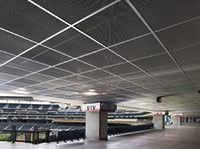view all Case Studies
Beating the Heat: Air Conditioner Protects Critical Equipment

Allina Medical Clinics and Communities consists of more than 45 health care facilities in Minnesota and Wisconsin, but one specific component in that building portfolio posed a challenge for the organization’s maintenance manager
September 16, 2010 -
HVAC
Allina Medical Clinics and Communities consists of more than 45 health care facilities in Minnesota and Wisconsin, but one specific component in that building portfolio posed a challenge for Matt Steding, the organization’s maintenance manager.
Steding had to address an overheating data room in a Forest Lake, Minn., clinic. The 10-by-12-foot room houses network switches and other computer and telecommunications equipment the clinic relies on for daily operations. The equipment generates heat and is heat sensitive, so keeping it cool prevents hardware malfunctions, costly damage, and system downtime.
“Now, with our electronic medical records and phone systems, our risk level has greatly increased,” Steding says. “When our computers go down, we have a serious situation.”
When the building’s central air conditioning shut off at night, temperatures in the room would increase, though not enough to damage equipment. But the recent installation of additional switchgear and computer equipment, along with a larger uninterruptible power supply, significantly increased the room’s heat load.
“The heat load in that space had been marginal before, but (it became) out of control,” Steding says. “It became clear that the room needed its own dedicated cooling system.”
Steding specified a MovinCool CM25 self-contained, ceiling-mounted air conditioner. The air-cooled unit delivers a cooling capacity of 25,000 Btu per hour, a high sensible cooling capacity of 18,900 Btu per hour, and a seasonal energy-efficiency ratio of 14. Its built-in mounting bracket, vibration isolators, and flanges allow installers to use off-the-shelf hardware.
Installation consisted of attaching the unit to the ceiling, connecting the intake and exhaust ducts, running a drain line from the unit’s built-in condensate pump to the P-trap of a sink in an adjacent maintenance closet, and wiring the unit to a 230-volt electrical circuit.
The final step in installing the CM25 typically is attaching the air conditioner’s wall-mounted controller thermostat. But Steding wanted to control the unit remotely from the environmental-management system in the company’s headquarters.
“The flexibility of the CM25’s control options made it very easy for us to integrate the unit into our automation system, which gives us remote monitoring and enhanced control capabilities,” he says.
Next
Read next on FacilitiesNet












